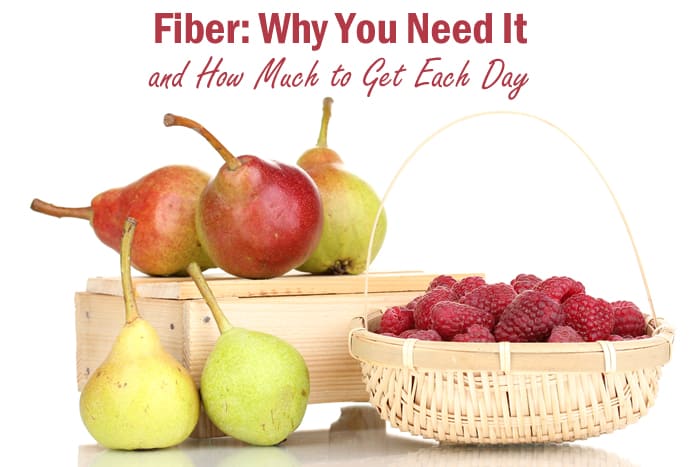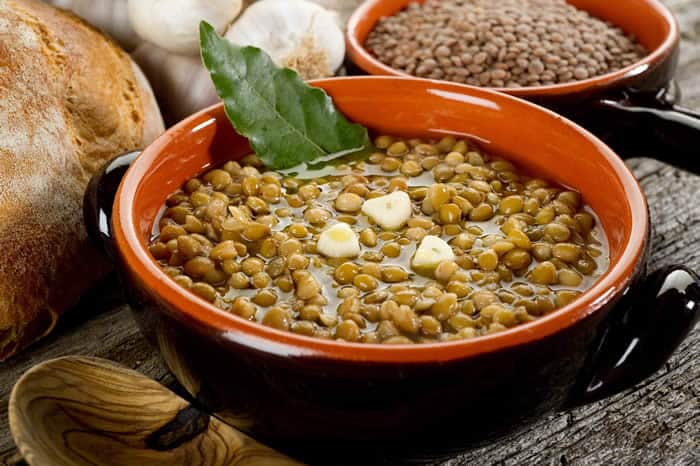

Following a healthy diet lowers disease risk, boosts immunity, and makes it easier to reach and stay at a healthy weight—even helping us live longer. (1) This type of eating plan generally involves consuming primarily vegetables, fruit, lean protein, and whole grains while limiting sugary drinks and processed foods.
But one other element that the Mayo Clinic calls “essential for a healthy diet” is fiber. (2)
Here’s what you need to know about fiber, including what it is, why it’s important, and how to get enough in your diet daily.
What Is Fiber?
Fiber is a plant-based carbohydrate that, unlike other carbs, the body cannot digest. Instead, it travels through the digestive tract without breaking down like other foods we consume.
There are two types of fiber:
- Soluble fiber, which dissolves in water and develops into a gel-like consistency
- Insoluble fiber, which doesn’t dissolve in water and increases the size of our stools
What Exactly Does Fiber Do?
One of the top reasons to consume enough fiber in our diet is that it helps our digestive system run more smoothly. Fiber is important in digestion for several reasons. One is that it makes our stools softer. Softer stools make our bowel movements easier to pass, reducing the risk that we will become constipated or develop hemorrhoids. (2)
Another reason that fiber is important in digestion is that it adds more bulk to our stools, making them bigger and more solid. If you tend to have loose stools, it may be because you don’t have enough fiber in your diet.
What Else Is Fiber Good For?
Fiber’s benefits extend well beyond greater digestive health. Through its effects on the gut’s microbiome—which refers to the bacteria in the gut that help break down and process food—it may also reduce our risk of major inflammatory conditions such as: (3)
- Colorectal cancer
- Heart disease
- Type 2 diabetes
- Breast cancer
- Diverticular disease
Other health benefits of eating enough fiber include lower cholesterol levels, easier blood sugar level control, and better weight management. (2)
There are plenty of good reasons to ensure that we’re getting enough fiber in our diets!
How Much Fiber Do You Need Per Day?
The recommended daily fiber intake varies based on age, sex, and how many calories we consume. So, there is no one-size-fits-all answer to how much fiber you should consume each day. That said, staying within a general range can be helpful.
According to the Dietary Guidelines for Americans, 2020-2025, the average adult female should get 22 to 28 grams of fiber daily (based on a 1,600 to 2,000-calorie daily diet) while the average adult male should aim for 28 to 34 grams of fiber per day (based on a 2,000 to 2,400-calorie daily diet). (4)
Foods Highest in Fiber
One of the easiest ways to reach your recommended daily fiber intake is by consuming foods rich in this indigestible carb. This includes fruits and veggies, nuts and seeds, peas and beans, and whole-grain food products.

To get the most “bang for your buck” and really increase your intake, some of the foods highest in fiber are: (5)
- Legumes, nuts, and seeds – split peas (16 grams per cup, boiled), lentils (15.5 grams per cup, boiled), and black beans (15 grams per cup, boiled)
- Fruits – raspberries (8 grams per cup), pears (5.5 grams per medium fruit), and apples with the skin on (4.5 grams per medium fruit)
- Vegetables – green peas (9 grams per cup, boiled), broccoli (5 grams per cup, chopped and boiled), and turnip greens (5 grams per cup, boiled)
- Grains – whole wheat spaghetti (6 grams per cup, cooked), barley (6 grams per cup, cooked), and bran flakes (5.5 grams per ¾ cup)
Additional Ways to Increase Fiber Intake
Eating high-fiber foods is one way to get more of this carbohydrate in your diet. Another helpful approach is to take a fiber-rich dietary supplement.
Natural Wellness offers Fiber Support, a probiotic powder supplement that provides three grams of dietary fiber per serving. This supplies approximately 12% of the daily fiber required based on a 2,000-calorie diet.




